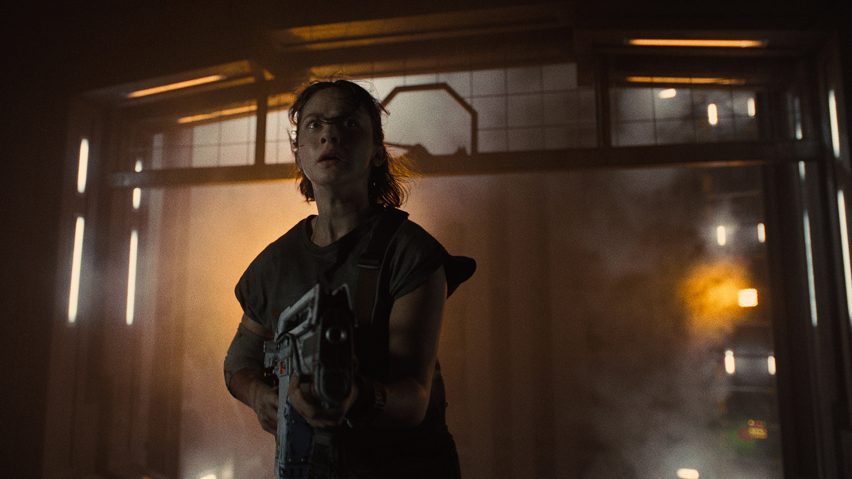
Production designer Naaman Marshall adopted "utilitarian" approach for Alien: Romulus
Heavy-lift machinery and vehicles informed the set design of the sci-fi horror film Alien: Romulus by production designer Naaman Marshall.
Helmed by director Fede Álvarez, the film is the seventh instalment in the Alien franchise, which began in 1979 with Ridley Scott's film Alien.
Alien: Romulus follows a group of space colonists who encounter hostile extraterrestrial lifeforms while scavenging the Renaissance, a derelict research station, in the year 2142.
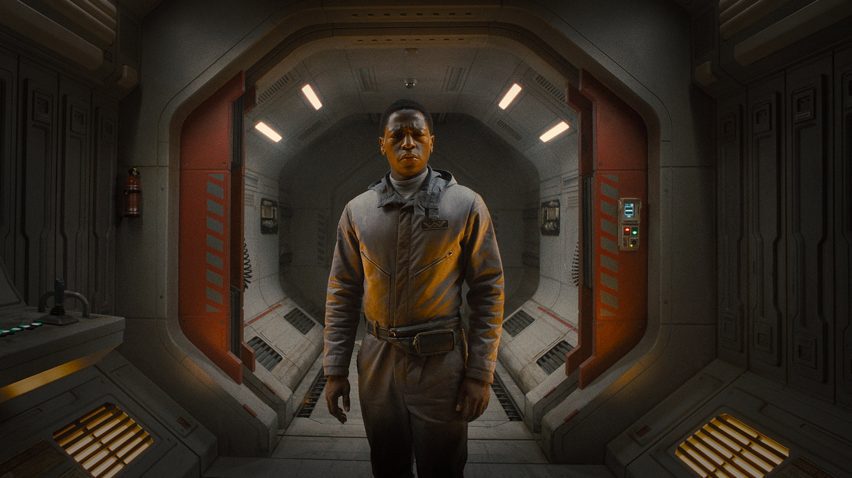
Marshall and Álvarez were determined to reinterpret the future Alien world while honouring legacy components from the franchise's first two practical effects-focused films.
"Those are the fun ones for us," Marshall told Dezeen. "I knew I was going to have a chance to build stuff and it wasn't going to be computer-generated, it wasn't just going to be slick and white and clean."
Keeping in line with the franchise's industrial design aesthetic, Marshall and Álvarez leant into original concept art by artist Ron Cobb. The structures of heavy-lift machinery and vehicles also informed the design, which Marshall aimed to keep as realistic as possible.
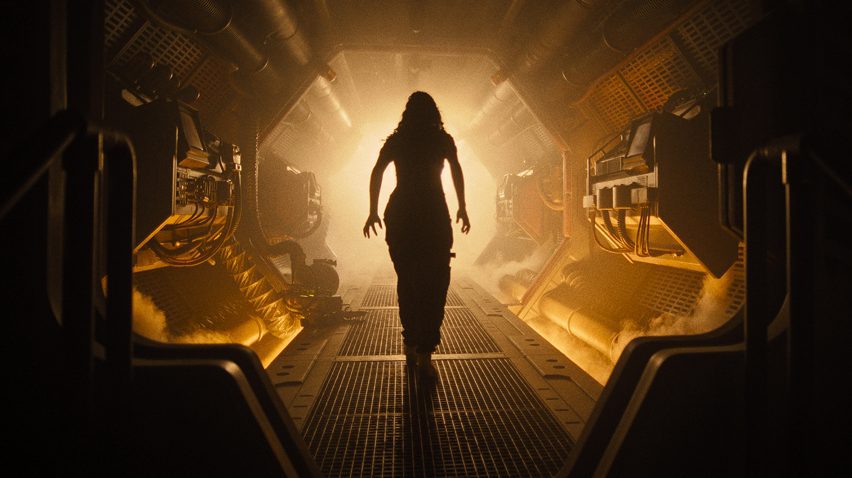
"I tend to design based on something that's real – or you lie to yourself and tell you it's real, and you come up with a whole backstory of what it actually is," explained Marshall.
All filming took place in Budapest, aside from the shooting of miniatures in Los Angeles, to facilitate a lot of stage space, crew members and amenities.
The designer said the Hungarian capital provided a good chance of finding "out-of-the-norm locations", mainly for the Jackson's Star mining colony run by the fictional megacorporation Weyland-Yutani.
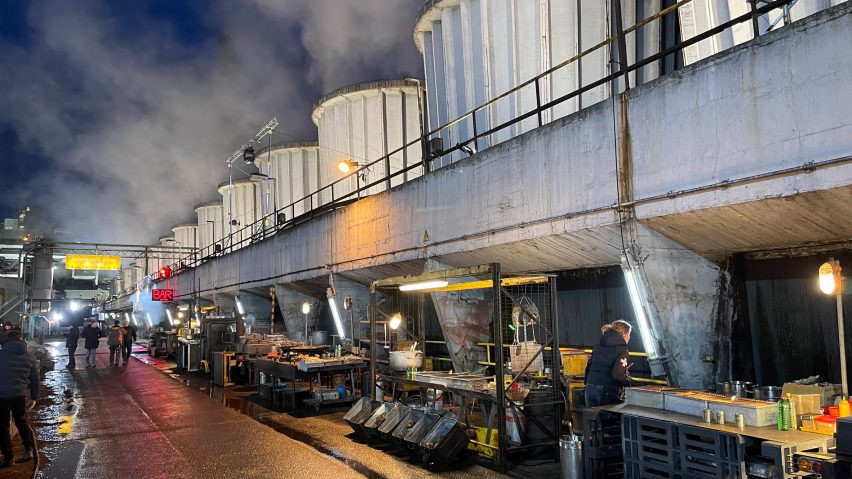
Locations included a working power plant. Here, the team shot large wheel-loaders inside its cooling structure, which held real steam that was used in the final shots.
Two spacecraft miniatures, roughly two meters in length, were built for the film's exterior shots. One was for the Corbelan, a hauler the colonists fly to the Renaissance, and the other for a Weyland-Yutani Echo probe featured in the film's opening flight.
Originally designed as a visual-effect aid, the miniatures were eventually built, painted and finished by effects company Studio Gillis and shot in front of full screens and smoke.
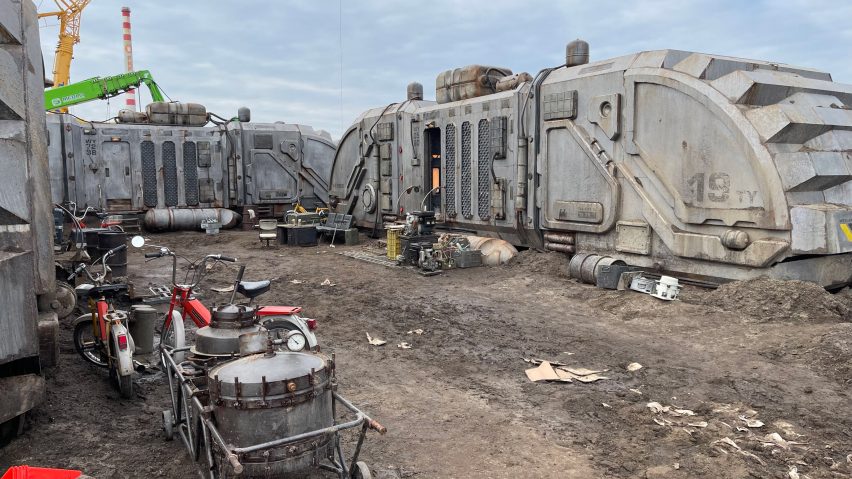
The final shape of the Corbelan, which Marshall described as "an earth mover in space", was influenced by bulldozers and aerial cranes.
Its interior is comprised of a cargo bay on one end with hibernation pods that lead to a narrow, straight corridor. This was a nod to the original film's "architecture, the bones of it, the shapes", Marshall said.
The corridor opens up into the "suit room" – the ship's maintenance area, which contains technology for operating generators and mechanisms that grip and hold onto containers.
"We started looking into cranes in harbours, it was very utilitarian in that sense," said Marshall.
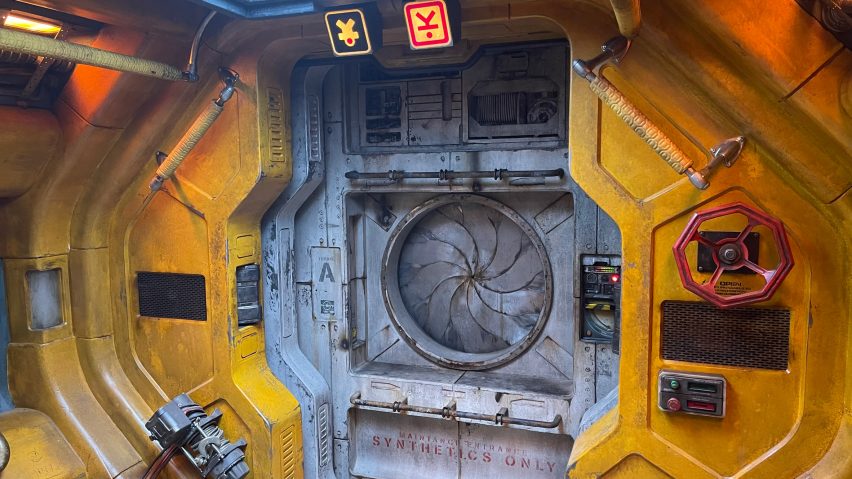
To meet a brief outlined by Álvarez, who wanted the cockpit "as tight as possible", the design team built the structure on a gimbal five meters off the ground for flight simulators to capture shaking actions.
"I'm a big fan of bringing the ceilings in, you start feeling the floor and really getting a 360 view," said Marshall. "Fede wanted that sense of excitement and thrill; some of the characters had never seen space or the sun before."
Corbelan's suit room set contained steps and stairs with actual doors that opened up in the centre for actor Cailee Spaeny to jump into the cargo bay two metres below.
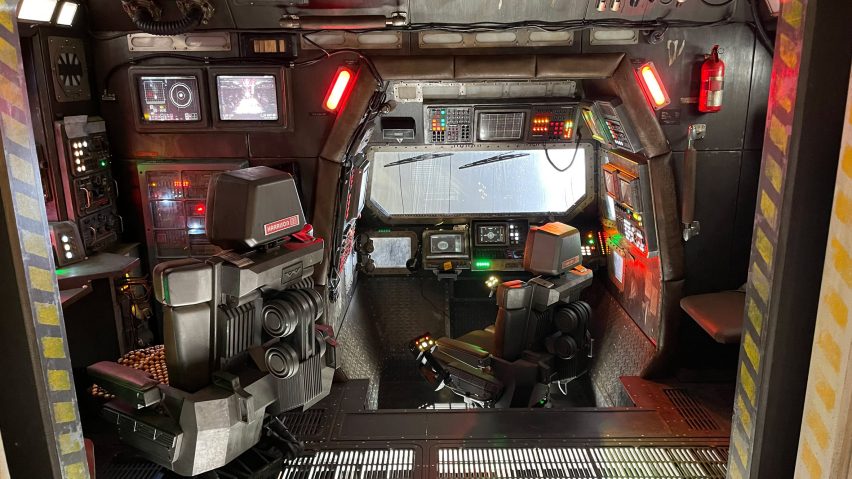
Research into the set design for Alien: Romulus initially began with the 2014 survival-horror video game Alien: Isolation as a framework reference.
But Marshall eventually focused more on the textures and "old patinas" of the original 1979 film, building each set in-house with the help of a design team.
"Zsuzsanna Sipos, my set decorator in Budapest, had a cast of characters that would 3d print, sculpt and paint," said Marshall.
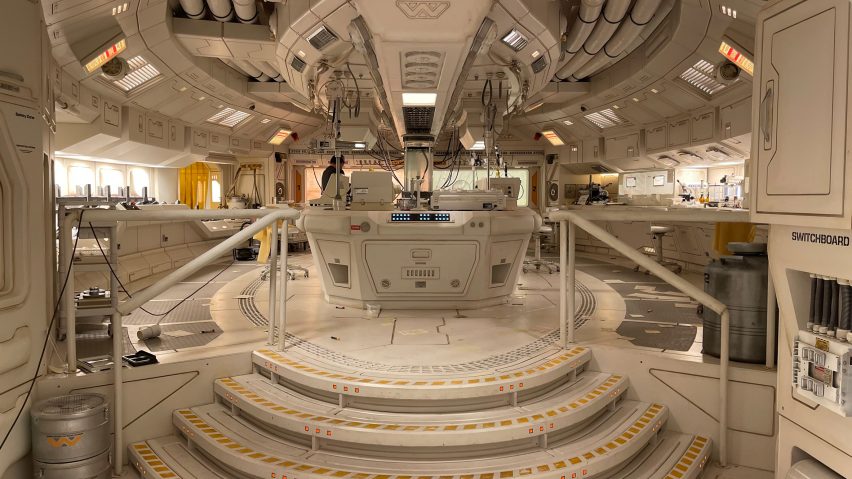
Alien: Romulus also embraces the 1986 sequel's updated aesthetics by exhibiting "twenty, thirty years newer technology" on the Renaissance.
Marshall described the Weyland-Yutani research station as "split in two", divided into the older Remus lab and the new Romulus module.
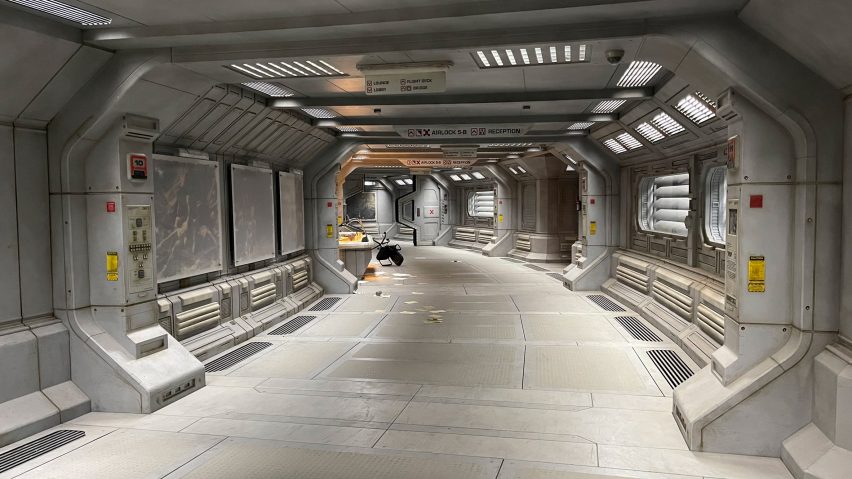
Connecting both labs is a long hallway and a long staircase, which were shot at night in the subway of Budapest.
A full kit of facehugger alien animatronics were crafted for a fight-chase scene in the Remus lab, including stationary versions and ones with wheels for travelling fast on floors. These were designed "like remote control cars", Marshall said.
Effects company Legacy Effects produced an animatronic doll from the torso up to create the damaged android Rook in the likeness of late actor Ian Holm, who portrayed Ash in the original film.
This sat atop a computer-bench set piece with a trap door underneath for puppeteers to operate its arm movements. Technicians operated the doll's mouth to sync up its dialogue.
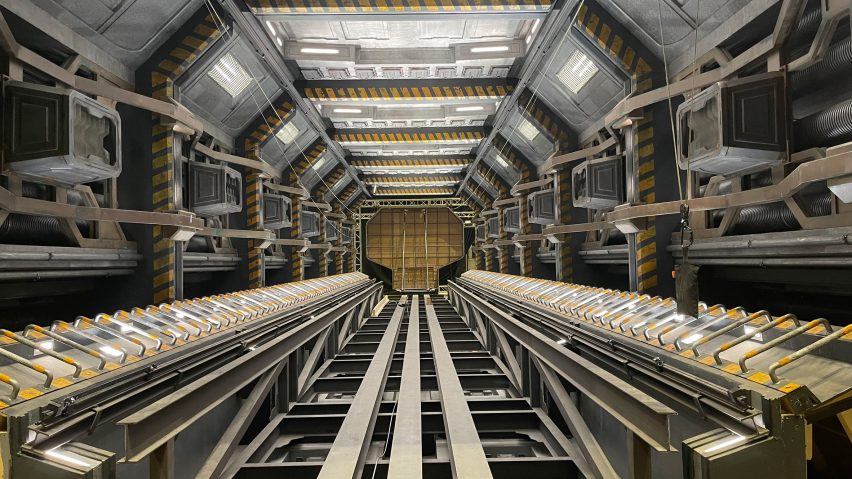
The set design also featured "extremely heavy" elevator sets and a massive 50-metre "hive" set housing a colony of xenomorphs – aliens in their final adult form – in the Romulus lab.
The design team incorporated rails and tracks on castors for pulling actors through the sets for the film scenes that feature weightless travel.
Some elevator sets were built horizontally to capture different hair movements as actors flew down, while others were vertical for shots of them holding onto ladders.
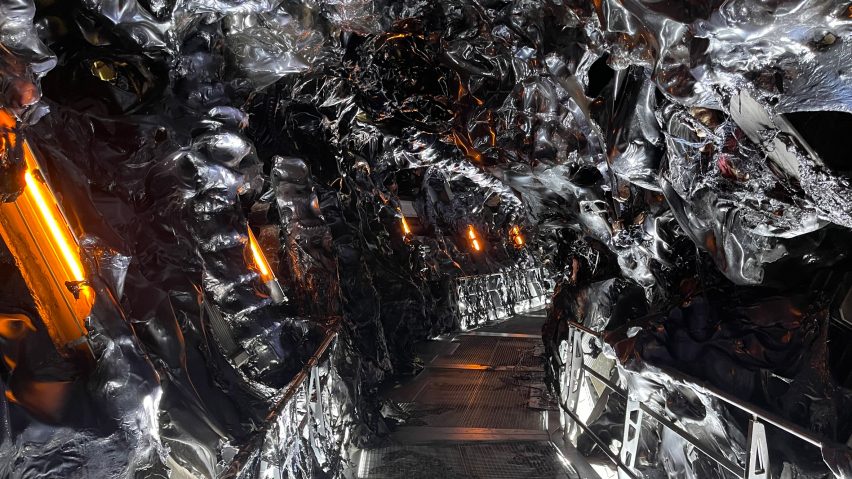
"I try to have one set that I push to the point where you think you might fail," Marshall said of the hive build.
"That was challenging – to make a cool-looking set, and then having tracks in the ceiling so you could fly through there."
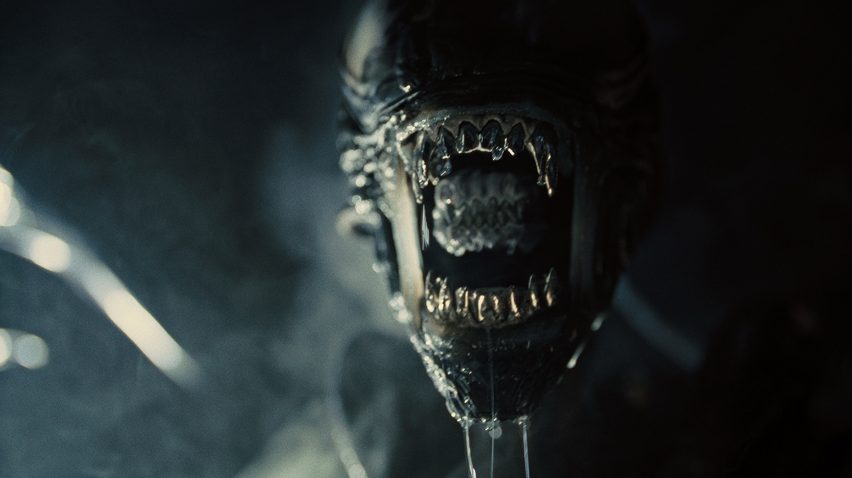
The slanted, arc-shaped set was eight metres tall, with a climbing wall built to give the illusion of characters spinning around a rail.
Referencing original biomechanical designs by Swiss artist HR Giger, crafted versions of the xenomorphs in Alien: Romulus included a Bunraku puppet, a mechanical headpiece, puppets and creature suits.
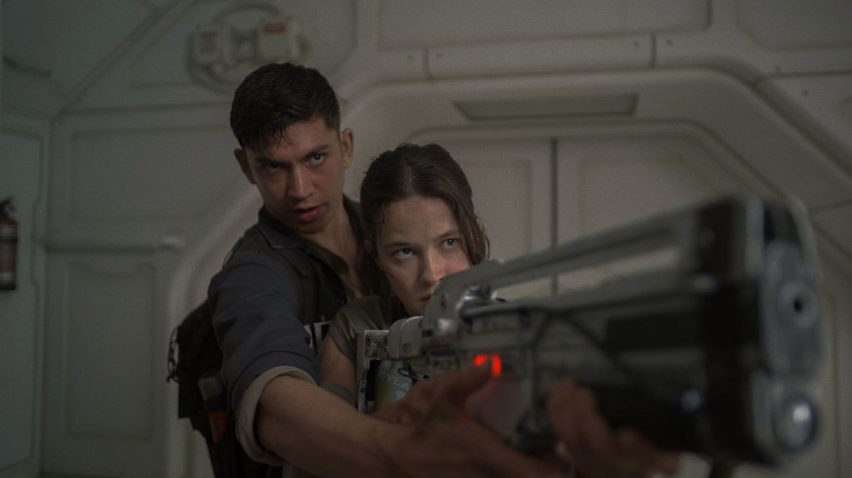
Referencing the fictional firearm created for director James Cameron's Aliens, Marshall played with scale for newer versions of gun prop designs by printing different sizes depending on the height of the actor, which he later cut out of foam core.
"The gun was one of my favourites, in the sense that we were doing a M41A Pulse Rifle and it could actually feel like the original," said the designer.
Other recent films that follow an industrial design aesthetic include Martin Scorsese's Killers of the Flower Moon and Wes Anderson's Asteroid City.
The photography is by Naaman Marshall unless stated otherwise.